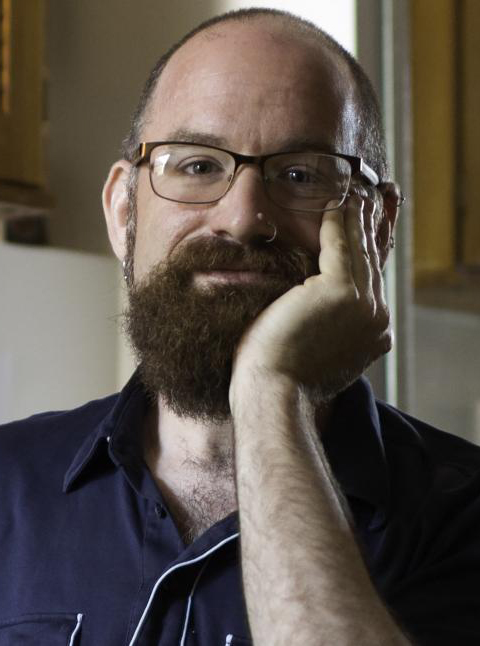The Sonnet in the Age of Assassins

I’ve loved the sonnet for as long as I’ve written poems. I don’t often write in the form, but it’s rare I’m not thinking about or reading examples of it. As a poet who’s also a teacher of creative writing, I try to be mindful about bringing my own loves into the classroom. Since their influence on my pedagogy is unavoidable, part of the transformative work of teaching lies in becoming more self-aware about what I love, and to transmute, through critical scrutiny, what I love into a curriculum that has meaning for others. The 2018 publication of both Wendy Trevino’s Cruel Fiction (which includes two lengthy sonnet sequences about race, pop culture, and border politics) and Terrence Hayes’s American Sonnets for My Past and Future Assassin (which was written during the first two hundred days of the current presidency)offered the occasion to think about the American sonnet’s contemporary context—ICE raids and the state’s ever-increasing racist rhetoric and violence—and to ask why a poet might turn toward the form during political crisis. Inspired by Trevino and Hayes equally, I decided to turn this line of inquiry into teaching.
In her insightful introduction to The Penguin Book of the Sonnet, editor Phillis Levin argues that, in writing a sonnet, “the poet experiences the illusion of control and the illusion of freedom, and from the meeting of those illusions creates the reality of the poem.” She also argues that one of the central tensions in the historical sonnet is “the unceasing conflict between the law of reason and the law of love.” Perhaps a political crisis that heightens this same unceasing conflict in our own democracy calls forth a need for both illusions: control exactly when democracy seems to be losing it, and freedom exactly when certain ones are being curtailed by increasingly autocratic, white supremacist, and xenophobic policies. Certainly, poetic form offers a place for the poet, as Levin argues, “to solve a problem that cannot be resolved by an act of will,” a problem that nonetheless “finds its fulfillment, if not its solution, only in the poem.” Poetic solutions to political problems are of course not direct actions; but solutions must be imagined before they can be manifested, and poems offer the imagination a theater in which what’s missing from the polis can be made visible. It is in that theater the reader of sonnets sits, newly engaged by language electrified by the tension between the laws of reason and the laws of love.
Out of this thinking, I designed a poetry workshop called “Poetics of the Present.” I built it on the hinge-word “present,” which can open onto the political and historical senses of the word, as well as onto the more metaphysical and interpersonal senses of attending to the moment, of being-present-with. Though sonnets were not the emphasis of the class, they were a part of it; the reading list contained Trevino’s Cruel Fiction and Hayes’s American Sonnets, as well as G. E. Patterson’s remarkable 2008 volume of sonnet sequences, To & From. The second half of the semester focused on writing poems in response to our reading, and included three sonnet-oriented writing prompts: the first of these asked students to familiarize themselves with the historical form and to innovate upon its volta-based structure; the second asked students to read Hayes and Wanda Coleman and ask themselves what’s “American” about their work, and to write a sonnet embodying the answer; the third asked students to be present with the process of writing a sonnet and to allow that attention to process to remain visible in the final product.
What follows are seven sonnets, one each by the seven students enrolled in ENG 5601 at Temple University in the Spring of 2019: jasper avery, Blanche Brown, Robert David Carey, Zan de Parry, Suro Kim, Alexandria Pulliam, and Tiana Wilson. Political, confessional, factual, surreal, literal, abstract, compact, projective: each of these sonnets enters into dialogue with the sonnet’s long history in a different way, and offers a postmodern iteration of the form, one in keeping with the innovation intrinsic to the sonnet’s migration from Italian to English, and from Italy to England to the United States. “Once the pattern became stable and recognizable,” Levin writes of the sonnet’s historical development, “writers began experimenting with it anew, usually respecting its overall shape but continually pushing its boundaries.” These seven sonnets push boundaries in their own unpredictable ways, granting us audience to the theatricality of the creative imagination at work, allowing us to sit in witness of the drama only the sonnet offers. I offer each one as literary proof of the fact that, as Levin writes, “Change has its own rhythm, dependent on both will and chance.” I offer these sonnets as a way to honor the work jasper, Blanche, Bob, Al, Suro, Alex, and Tiana did as individual poets, as well as to honor the work they did together as colleagues in poetry and imagination. And I also offer them with love.
A former Stegner Fellow at Stanford University, Brian Teare is the author of five critically acclaimed books, most recently Companion Grasses, a finalist for the Kingsley Tufts Award, and The Empty Form Goes All the Way to Heaven. His sixth book, Doomstead Days, is just out from Nightboat Books. He’s also published eight chapbooks, including Paradise Was Typeset, SORE EROS, and Headlands Quadrats. His honors include Lambda Literary and Publishing Triangle Awards, and fellowships from the NEA, the Pew Foundation, the American Antiquarian Society, the Headlands Center for the Arts, the Vermont Studio Center, and the MacDowell Colony.
